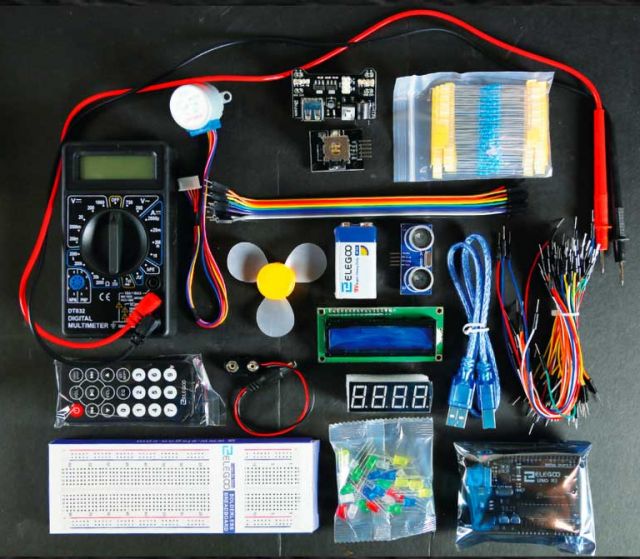Convergence "The Lab’s in the Mail"
Teamwork in the ECE Department on "The 10 Series" course ensures that students in required classes have what they need to do lab work at home

ECE students who are taking ECE 10A or 10C in this fall quarter probably do not fully grasp what it took to ensure that they can do hands-on lab work for the courses, which are being taught remotely.
Second-year electrical engineering majors at UCSB must normally take those two courses, plus a third, ECE10B; together they make up the Foundations of Analog and Digital Circuits & Systems requirement. Students learn the essentials of analog and digital circuits in 10A, are introduced to MOSFETs (metal–oxide–semiconductor field-effect transistors) in 10B, and learn the basics of transient analysis (a circuit’s response over time) in 10C.
Each course includes a lab to provide hands-on experience in applying core knowledge. Last spring quarter, when the COVID pandemic closed campus labs — undergraduate labs will remain closed at least through fall quarter — the ECE 10 labs were run online, with simulations taking the place of hands-on work. When summer arrived, department faculty, including department vice-chair Clint Schow and assistant professor Galan Moody, came up with a plan for fall quarter that would afford students the critically important hands-on experience. "We concluded that online simulations weren’t the way to go," says Moody.
"The students really need to work with the hardware to build an intuitive and conceptual understanding of the content in the lectures," Schow adds.
But that hardware is prohibitively expensive. The solution was to put together and mail to each student, wherever they might be, a package containing the parts needed to do the lab assignments at home. The main piece is an Arduino board, which costs only about $50, as opposed to an alternative that costs $500. Arduino is an open-source electronics platform based on easy-to-use hardware and software. The programmable board has a micro-controller that can read inputs, such as a light on a sensor or a finger on a button, and turn them into an output to perform some action, such as activating a motor or turning on an LED.
The task of ensuring that these mailed lab packages would work fell to four doctoral students who are TAs in the various ECE10 courses: Nikita Buzov, I. T. Fufuengsin, Shabnam Larimian, and Kamyar Parto.
ECE shop director Paul Gritt and his colleague Chris Wimmel assembled and mailed the kits, which included the Arduino board, a “breadboard" (a kind of blank canvas for building electronic circuits), a digital multimeter, LEDs, operational amplifiers, capacitors, inductors, and resistors.
COE/CLS Convergence magazine (Winter 2020) - "The Lab's in the Mail" (full article pg. 16)